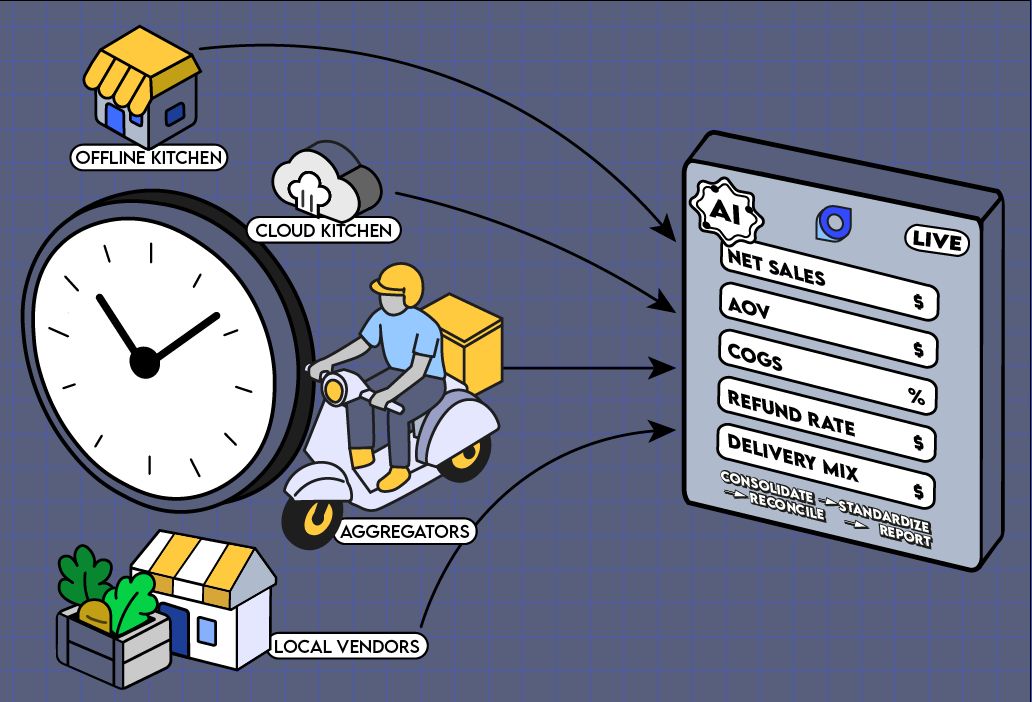When it comes to financial management, the budget serves as a crucial roadmap for organizations. It lays out the anticipated income and expenses, providing a framework for decision-making and resource allocation. However, the numbers in a budget are not set in stone—real-world circumstances often deviate from the original plan. That's where budget variance analysis comes into play. By comparing actual financial results to the budgeted figures, organizations can unravel valuable insights, identify areas of improvement, and make informed adjustments to their future strategies.
Budget variance analysis is a powerful tool that delves beyond the surface-level numbers, offering a comprehensive understanding of deviations and their underlying causes. It enables organizations to assess performance, evaluate the effectiveness of their financial planning, and identify areas of concern or success. By analyzing both favorable and unfavorable variances, decision-makers gain a holistic view of the organization's financial health and can proactively address issues or capitalize on opportunities.
In this blog, we go over the basic definition of budget variance analysis, the key steps it entails, and its benefits. Let’s get started.
What is budget variance analysis?
Budget variance analysis is a financial tool used by businesses to assess how their actual financial performance compares to their budgeted expectations. It's essentially a way to check in and see if you're on track financially.
Here's a breakdown of the key aspects:
Comparison: It compares budgeted amounts (what you expected to spend or earn) with actual amounts (what you actually spent or earned).
Variances: It identifies the differences between budgeted and actual figures. These differences are called variances, and they can be positive (favorable variance) or negative (unfavorable variance).
Understanding the Why: The analysis goes beyond just finding the variances. It digs deeper to understand the reasons behind the variances. This helps identify areas where adjustments might be needed.
A real-life example of budget variance analysis
To illustrate the power of budget variance analysis, let's consider a manufacturing company that budgets a certain amount for raw materials each month. However, due to fluctuations in resource prices or unexpected supply chain disruptions, the actual expenditure on raw materials may vary.
By conducting a budget variance analysis, the company can determine whether the variance is primarily caused by external factors or internal inefficiencies. This analysis can then inform decisions about negotiating better prices with suppliers, optimizing inventory management, or seeking alternative sourcing options.
What are the benefits of budget variance analysis?
Budget variance analysis offers a range of benefits for businesses, helping them improve their financial performance and decision-making. Here are some key advantages:
Improved Financial Performance
By identifying variances, businesses can pinpoint areas where they are overspending or under-earning compared to expectations. This allows them to take corrective actions, like reducing costs or increasing sales efforts, to get back on track and achieve financial goals.
Better Budgeting Accuracy
Analyzing variances over time helps businesses understand where their budgeting process might be inaccurate. This knowledge can be used to refine future budgets and make them more realistic reflections of expected performance.
Enhanced Cost Control
Budget variance analysis sheds light on areas where spending is exceeding expectations. This empowers businesses to implement cost-saving measures and improve their overall financial efficiency.
Informed Decision-Making
Variances can reveal underlying trends or issues that might otherwise go unnoticed. By understanding these factors, businesses can make more informed decisions about resource allocation, pricing strategies, and other aspects of their operations.
Strategic Adjustments
Significant variances may indicate a need for broader strategic changes. The analysis can help businesses identify if they need to adjust their product mix, target market, or even their overall business model to stay competitive and achieve long-term success.
What are the key steps involved in budget variance analysis?
Budget variance analysis typically follows a well-defined set of steps:
#1 Gather Data
This is the groundwork. You'll need to collect all relevant financial data, including budgeted amounts and actual results for the chosen period (month, quarter, year). This data can encompass revenue, expenses, costs, and other financial metrics depending on your specific analysis goals.
#2 Calculate Variances
Once you have your data organized, it's time to crunch the numbers. The core calculation involves subtracting the budgeted amount from the actual amount for each financial metric you're examining. A positive variance indicates the actual performance exceeded the budget (favorable), while a negative variance signifies falling short of the budget (unfavorable).
#3 Analyze Variances
Don't just stop at the numbers! This step delves deeper to understand the reasons behind the variances. Look for patterns, trends, or external factors that might have influenced the results. Consider factors like price fluctuations, changes in customer behavior, or unexpected events that could have impacted performance.
#4 Take Corrective Action (if necessary)
Based on your analysis, determine if corrective actions are needed. If significant variances point to areas where spending is out of control or revenue is falling short, you might need to implement cost-saving measures, adjust pricing strategies, or launch targeted marketing campaigns to get back on track.
#5 Monitor and Review Progress
Budget variance analysis is an ongoing process. Regularly monitor your variances and the impact of any corrective actions taken. This helps assess the effectiveness of your adjustments and ensures you're continuously improving your financial performance.
What is the role of tech in increasing the accuracy of budget variance analysis?
Technology and data analytics play a transformative role in supercharging the accuracy and efficiency of budget variance analysis. Here's how—
Enhanced Data Collection and Accuracy
🚀 Automated Data Feeds: Manual data entry for variances can be error-prone and time-consuming. Technology allows for automated data feeds from accounting and enterprise resource planning (ERP) systems, ensuring data accuracy and real-time updates.
🚀 Data Integration: Data analytics tools can integrate data from various sources, like sales figures, marketing campaigns, and production costs. This comprehensive view provides a richer context for analyzing variances.
Improved Efficiency and Speed of Analysis
🚀 Data Warehousing and Business Intelligence (BI) Tools: Data warehousing centralizes financial data, while BI tools facilitate data visualization and analysis. This allows for faster identification of trends and patterns in variances, saving valuable time and resources.
🚀 Automated Calculations and Reporting: Spreadsheets can be cumbersome for complex variance analysis. Data analytics tools can automate variance calculations and generate reports with greater speed and accuracy.
Deeper Insights and Predictive Capabilities
🚀 Advanced Analytics Techniques: Techniques like regression analysis and machine learning can uncover hidden patterns and correlations within financial data. This can help identify potential causes of variances and predict future performance.
🚀 Scenario Planning and Simulations: Data analytics tools allow for simulating different economic or market scenarios. This helps businesses understand the potential impact of various factors on their budget and proactively adjust strategies.
Do better budget variance analysis with Bluecopa
Bluecopa, a budgeting and financial forecasting tool can help you with the following—
Automated Data Collection and Integration: Bluecopa can connect to various financial data sources and automatically import them, reducing manual data entry errors and ensuring real-time data for analysis.
Streamlined Calculations and Reporting: Bluecopa can automate variance calculations and generate reports that present the information clearly and concisely. This saves time and allows for faster analysis.
Scenario Modeling: Bluecopa allows you to build different budget scenarios based on various assumptions. This can help understand how different factors might impact your budget and variances.
Improved Visibility and Collaboration: Bluecopa can provide a centralized platform for viewing budget data and variances. This can improve communication and collaboration between finance teams and other departments.
Integration with Analytics Tools: Bluecopa integrates with data analytics tools. This would allow for more advanced analysis of variances, potentially uncovering hidden patterns and trends.
To know more, send us a note. We will help you get started with a personalized demo.




